Anna Rosen
How 2 Burlesque the Void
ANNA ROSEN
Night Gallery is pleased to present How 2 Burlesque the Void, an online exhibition of new works on paper by Anna Rosen. Rosen has been a key figure in Night Gallery’s history, beginning with our inaugural group exhibition Private Life in 2010. Rosen has subsequently appeared in a number of exhibitions at Night Gallery, including her solo exhibition Skechers Shape-Ups and the group exhibitions Aunt Nancy and CK One Daily. Over the past two years, Rosen has focused her practice on works on paper, having spent time in New York, Brussels, and most recently, Los Angeles, where she currently resides.
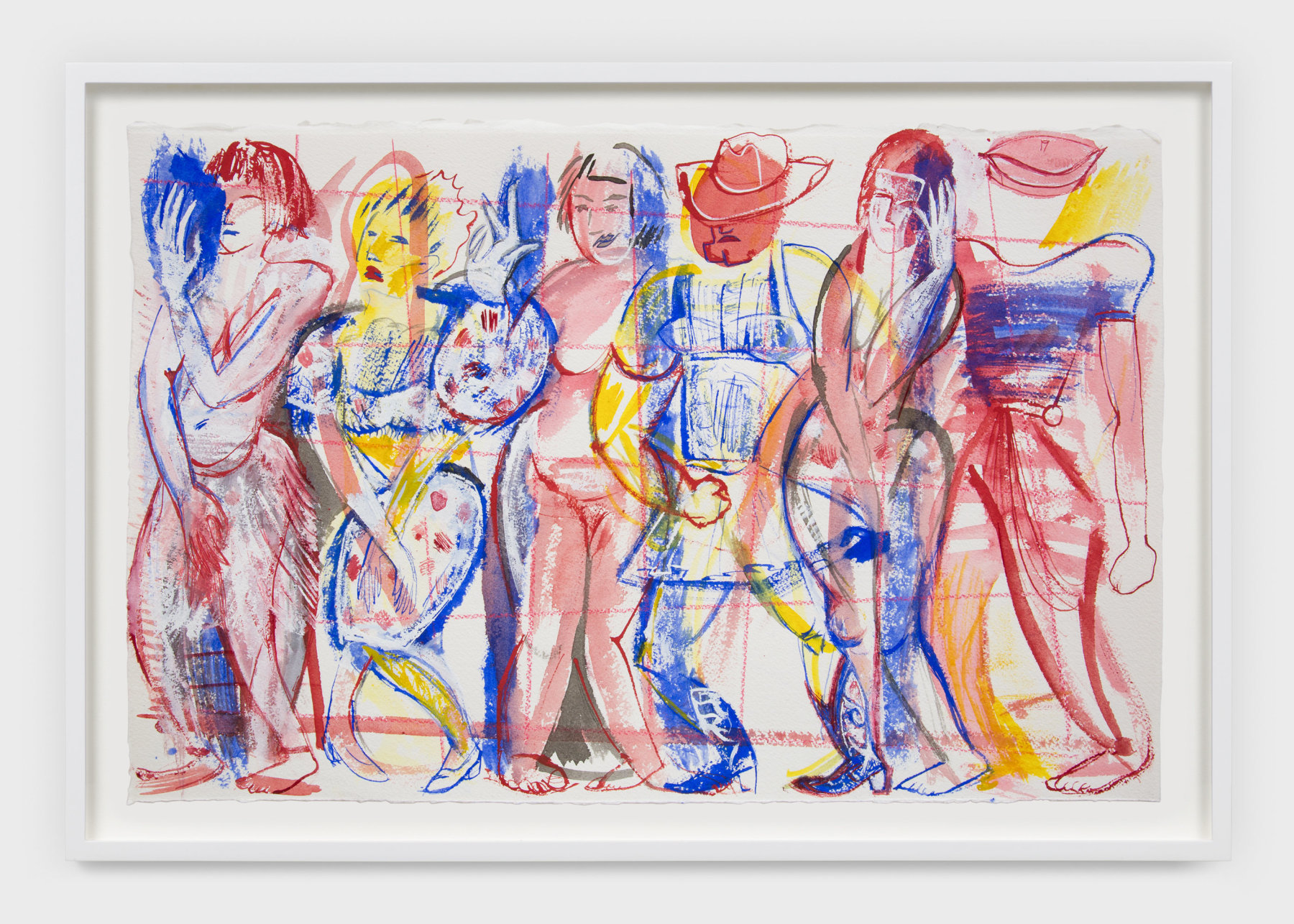
Egg and Dart, 2020
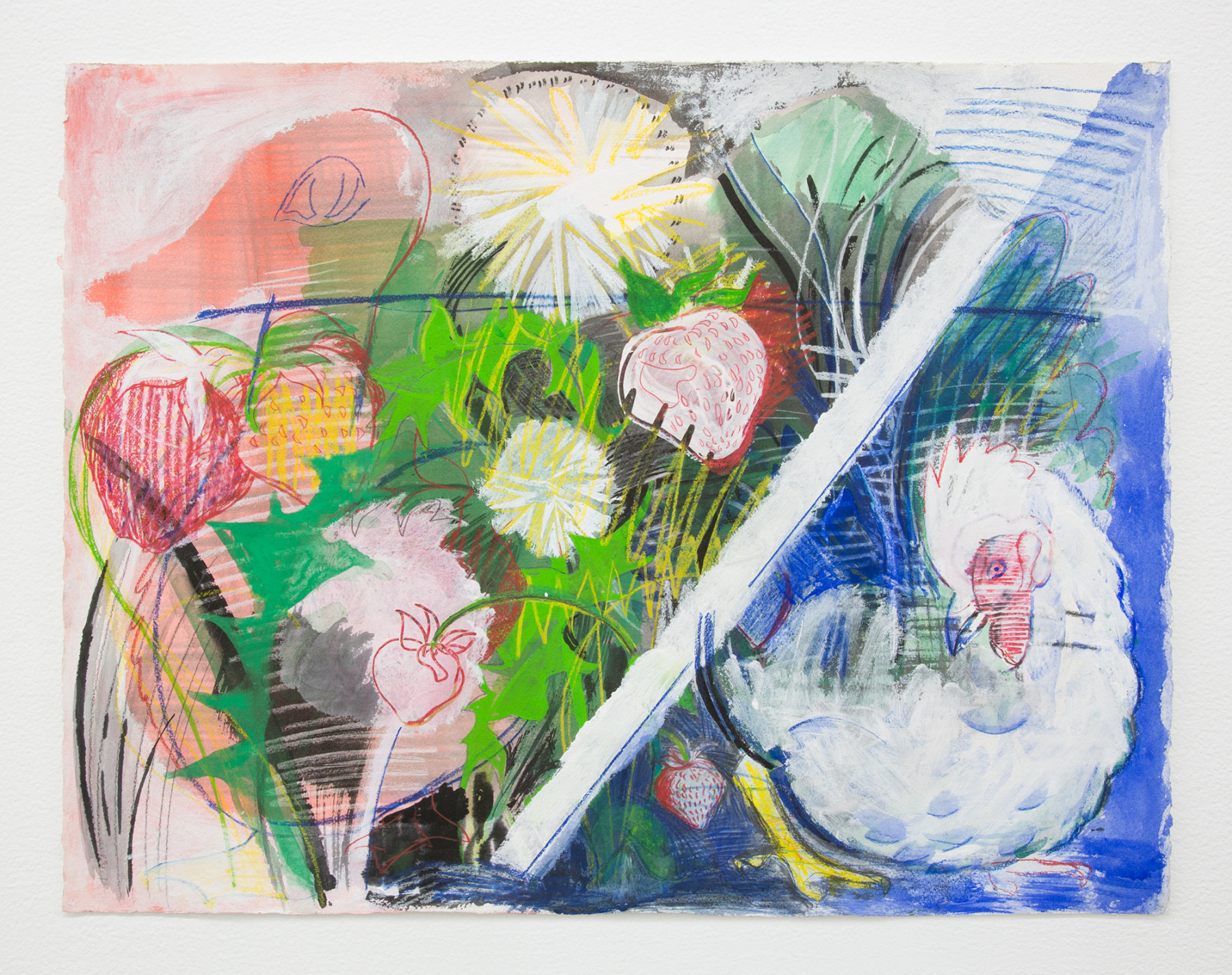
Duck/chicken, 2019
Anna Rosen’s lively, illustrative compositions emerge out of a process of experimentation with form and pattern. Working cyclically in watercolor, masking fluid, gouache, ink, colored pencil, and graphite, her works begin abstractly, as the artist searches for what she describes as “the syncopated rhythm” of each piece. Playing off of previous works, her compositions feature recurring motifs and repetitive imagery, allowing the graphic to become a guideline for playfully surrealistic representational works.
Though Rosen derives her content from a process of free association, her imagery often relates back to a central notion of the facade. The artist names the Belgian proto-Expressionist painter James Ensor as a key influence, citing his famous subject of the mask throughout his body of work, used to gesture at notions of identity, genre, and the artifice of symbolism.
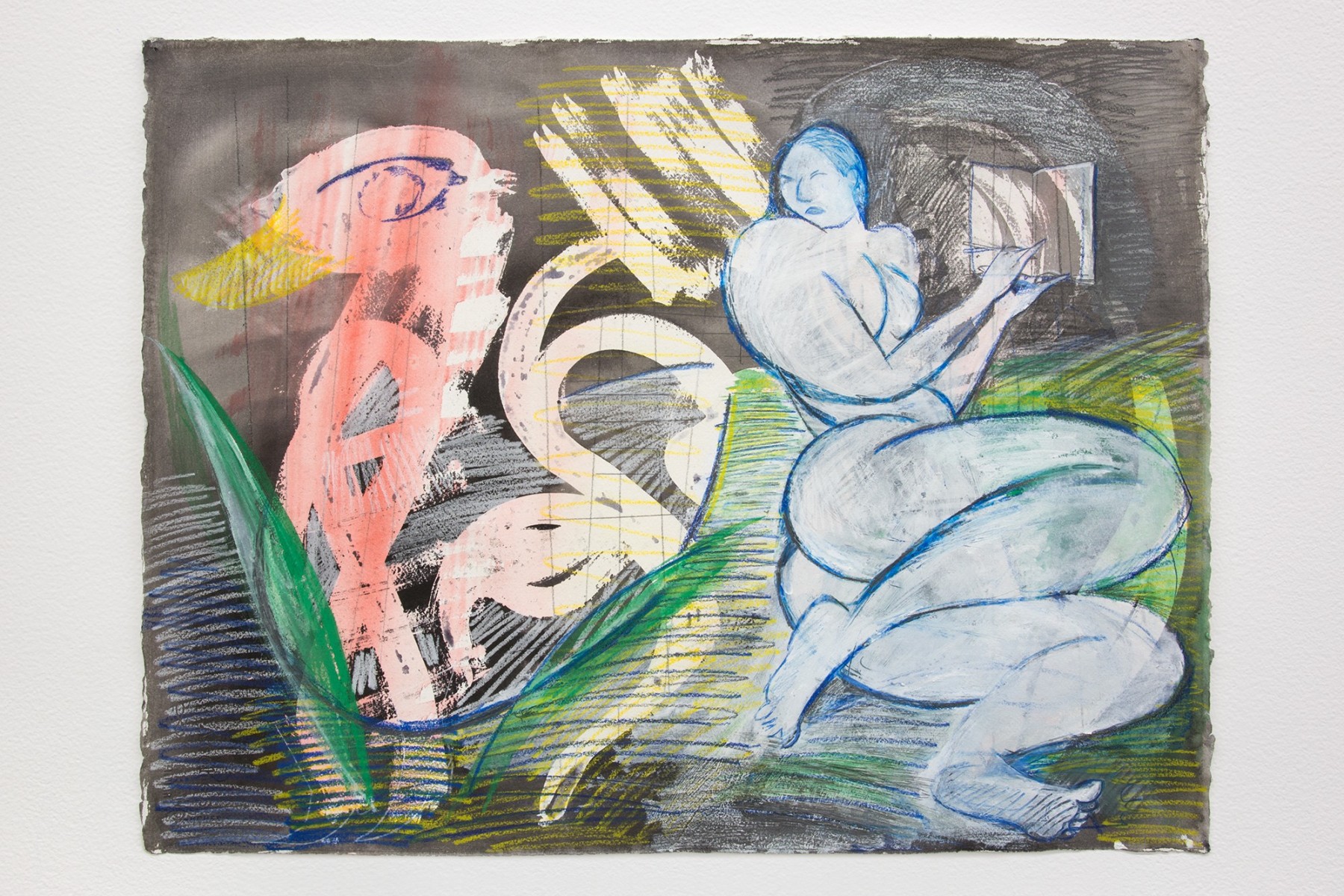
Nude drawing a duck (2), 2020
Rosen’s recurring images – Greek vessels, female nudes, and the duck (frequently replicated as a decoy for hunting practices) – similarly conjure notions of the false face, referring to centuries of art history in the process. Placing these complex tropes in intuitive, gridded compositions which work within four-color systems, Rosen creates highly energetic works which revel in the beauty and the trickery of the external.
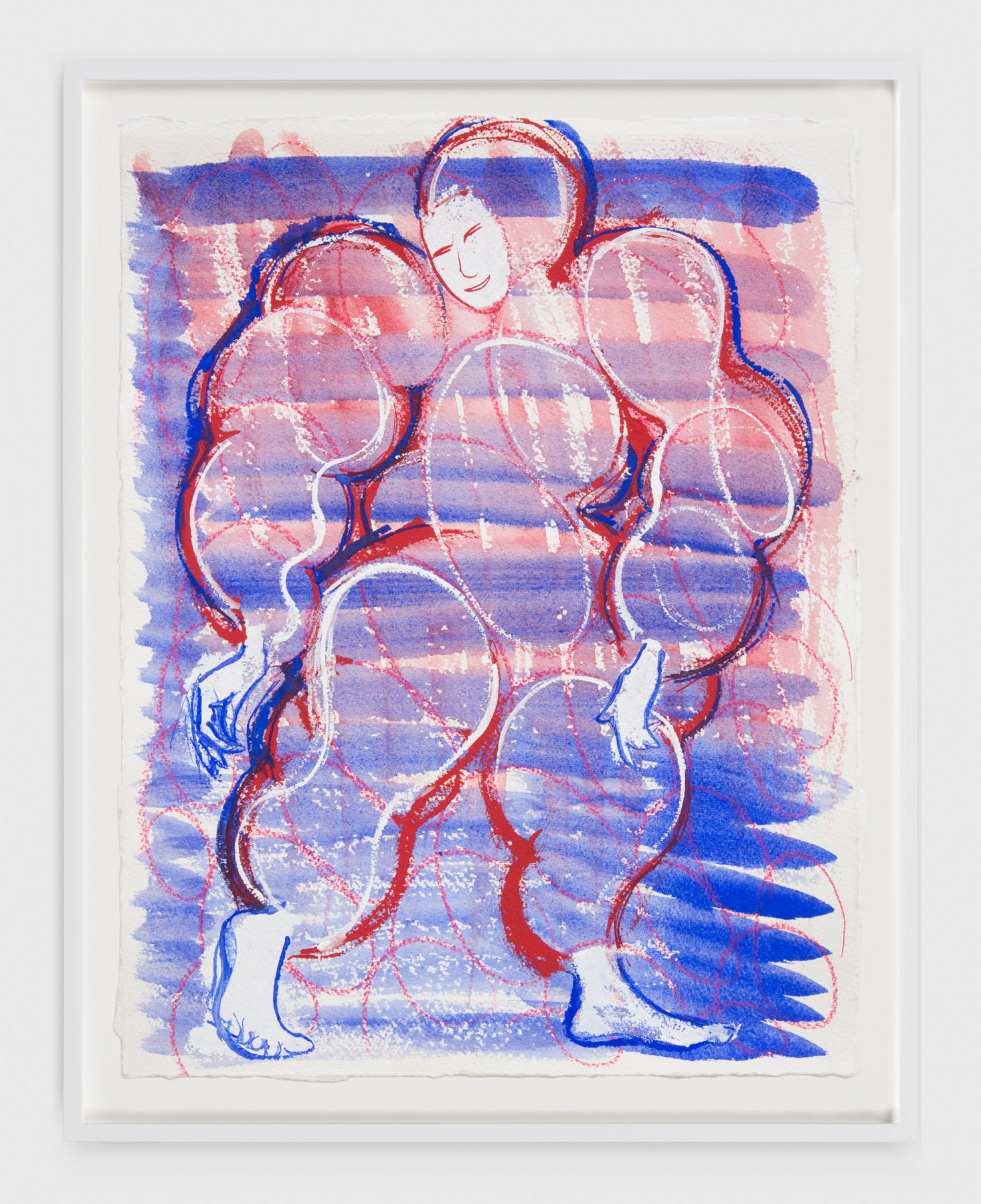
Snow Queen, 2020
Why So Serious?
A conversation with Anna Rosen by Cat Kron
Rosen’s work traffics in the macabre behind the sunny and finds appeal within the abject. When I visited Rosen’s studio in 2014, she had been making oil paintings of suns crudely rendered in impasto on canvas. She’s since moved to paper, a surface she found to be uniquely suited to capture these tensions.
CK: A persistent theme in your work is rudimentary iconography: simple, universally discernable symbols. In these new works icons seem to overlap: They’re mashed up against or even contained within one another.
AR: I’d previously been thinking of my paintings as objects, rather than as windows. But now I’m interested in moving between the two modes. There’s something about paper that allows you to go “inside” and suggest depth in a way that canvas doesn’t. Paper allows you to create space and tension.
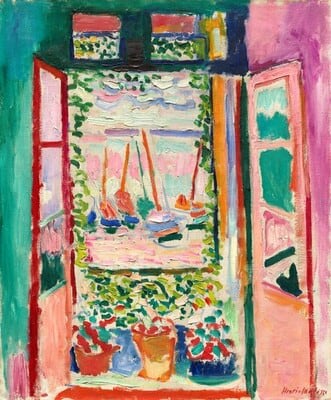
Henri Matisse, Open Window Coullioure, 1905
CK: Right, and it keeps a record of your marks. You can’t paint over it in the same way, and especially not with watercolor. The figures too are almost “nested.” For example the figure-bottle composites.
AR: Yes, interiority applies there as well. I’ve been playing with the ideas of vessels. Last year I started combining vessels and vases with the female form. I was working in a studio in D.C. that had regular organized group crits and someone questioned me about this choice. “This is extremely well-trod territory. How do you justify it?” But it’s well trod for a reason, because it’s universal. I like to use images and symbols that are so familiar that they become kind of “emptied out,” and this was a way of doing it explicitly. Our bodies are our vessels. So we’re all contained.
CK: In some of the works it’s as if you’re looking out a window, and the outside world is framed by the windowpane. In that respect they remind me of Matisse’s paintings of windows. What’s outside is framed and cordoned off, but you the viewer are implicitly boxed in as well.
Actually, that period of early Modernism feels very present in your work generally.
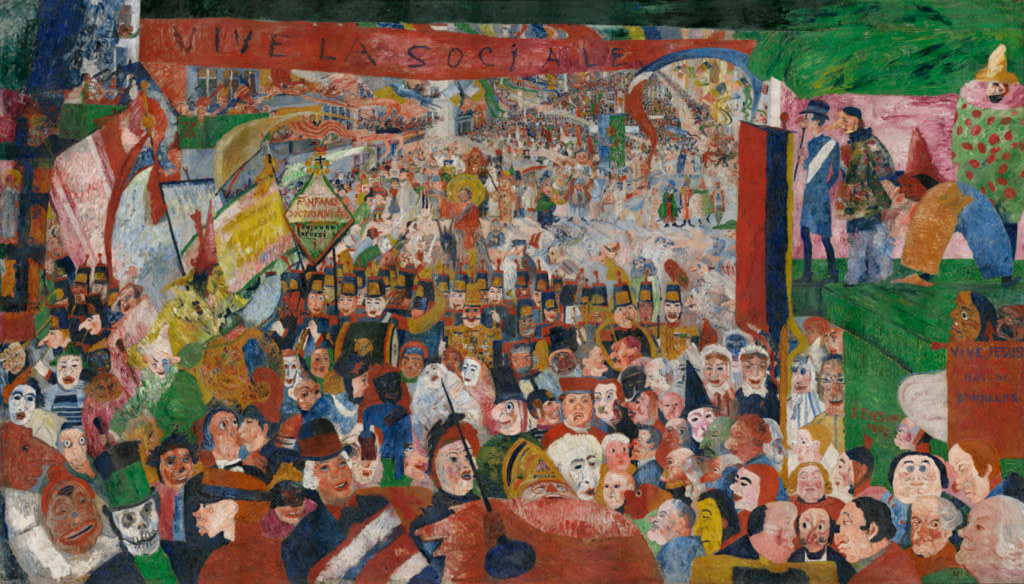
James Ensor, Christ’s Entry into Brussels in 1889, 1888
AR: James Ensor in particular has always been a hero to me. I was in Brussels last year and was thinking about him a lot, and that’s when the mask imagery started to come back into my work. Also, the way he’s able to capture the frenetic energy of the throng in Christ Entering Brussels (1889). Bizarre, vulgar bodies in motion, piled one atop another. And the inherent potential for horror and grotesqueness in what’s supposed to be a joyful moment.
I had a big poster of a clown on my bedroom wall as a kid. One day my older brother had a friend over and this kid was freaked out by the clown poster. It was the first time I realized that some people were afraid of clowns, and in the moment I was ashamed, thinking that this older kid thought I was weird. But I’ve come to associate carnival-esque imagery with a feeling of empowerment: It’s reveling in its own suspect taste.
"There’s something about paper that allows you to go 'inside' in a way that canvas doesn’t."
– Anna Rosen
Ensor would sometimes sign his work as “the painter of masks.” I like the idea of the painting as mask, as a sign of its duplicity. The dubious naturalism of his still lifes, in which grotesque entities inhabit these mild, domestic tableaux. His use of decorative, naive, and folk motifs in these otherwise “gentile” compositions creates a paradox.
I think of my icons and figures as cartoons, but by cartoon I don’t mean caricature. In terms of the sensibility of these paintings, I imagine someone going about their day, whistling, not taking himself too seriously. But it’s all a mask.
CK: I’m imagining R. Crumb’s Mr. Natural cartoon character right now. Blithe on the surface with some darkness in the depths.
AR: And conversely, even though it’s completely obscured, on some level I’m delivering a punch line.
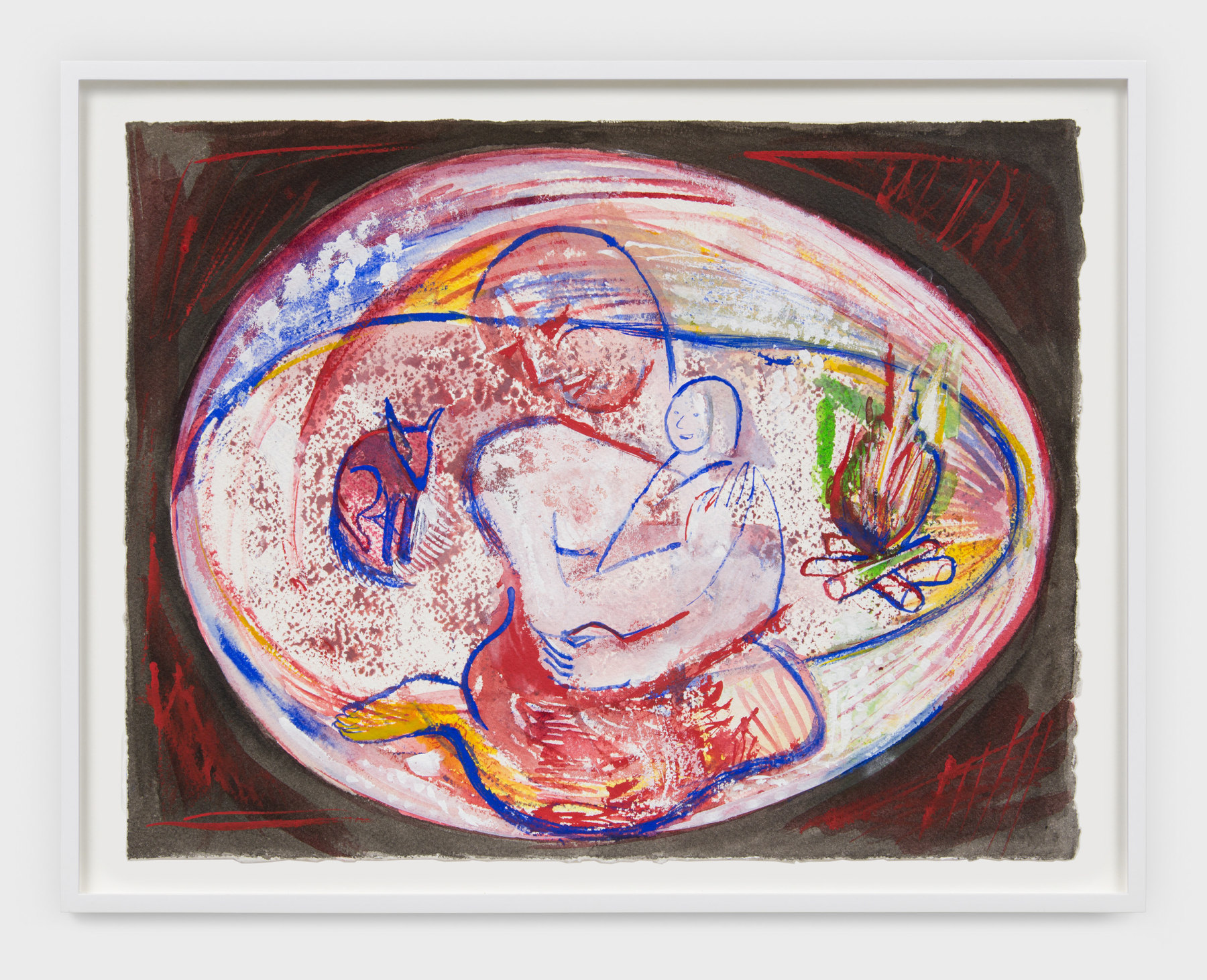
Egg Life, 2020
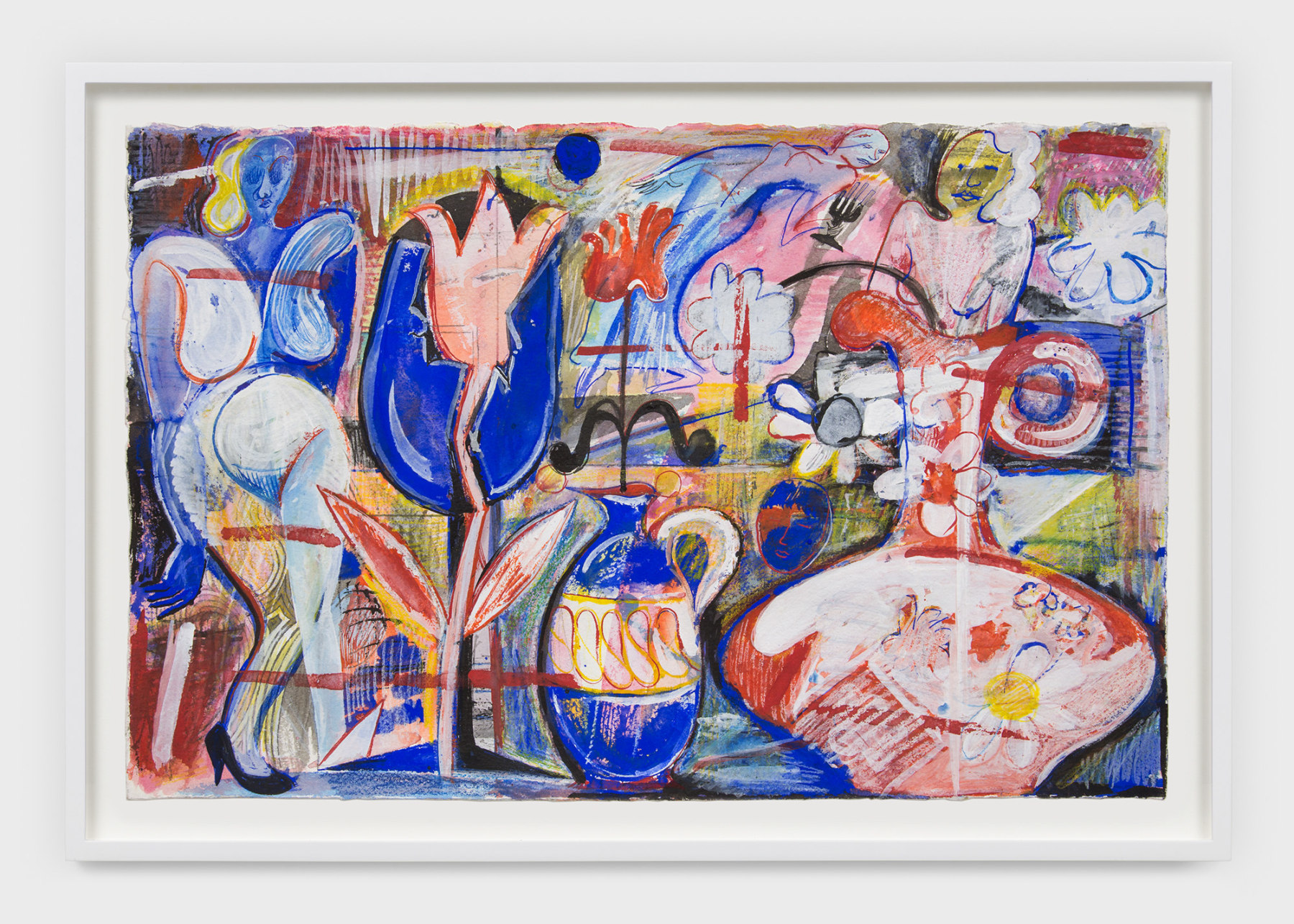
Colorfield, 2020
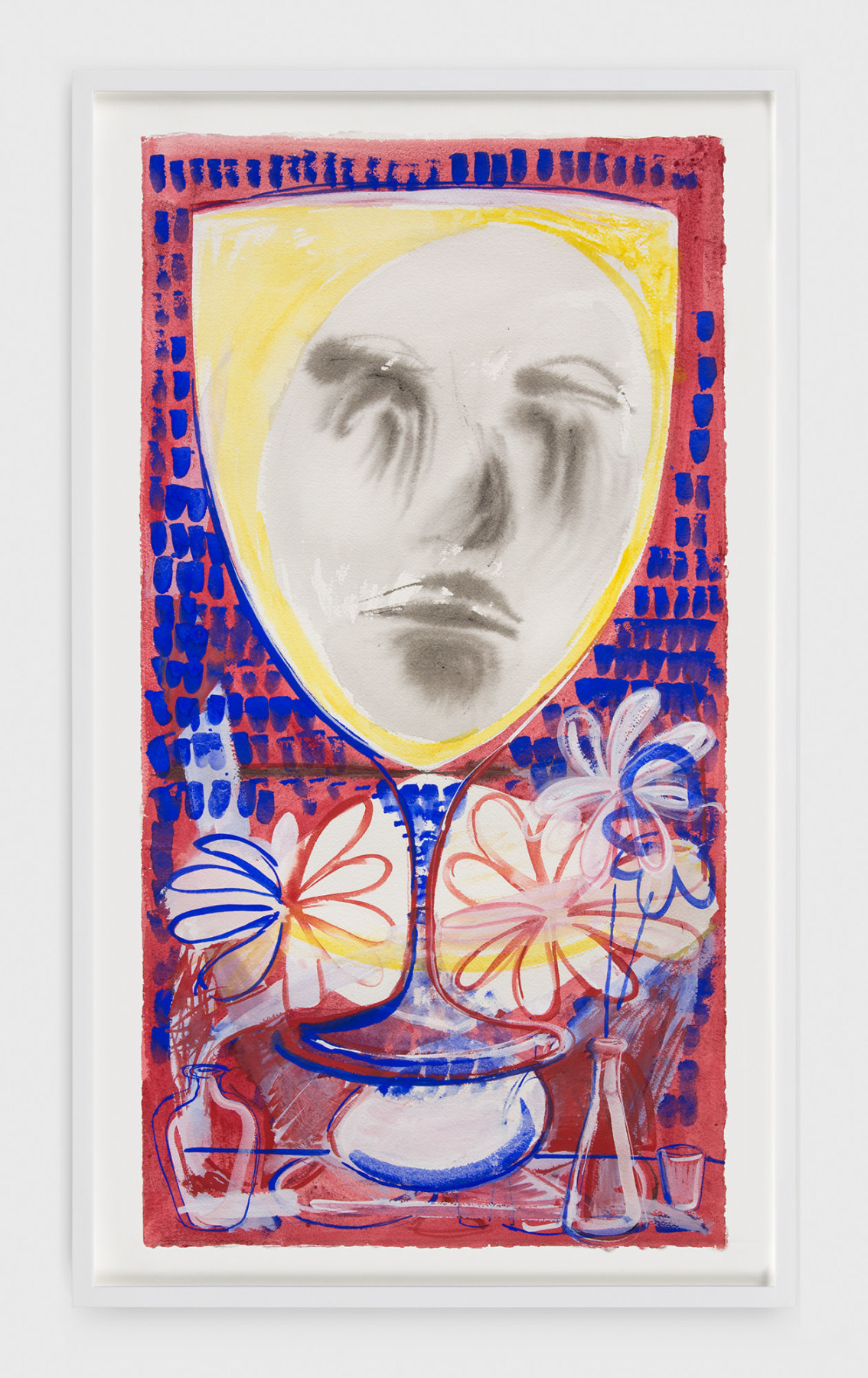
Wineglass on egg, 2020
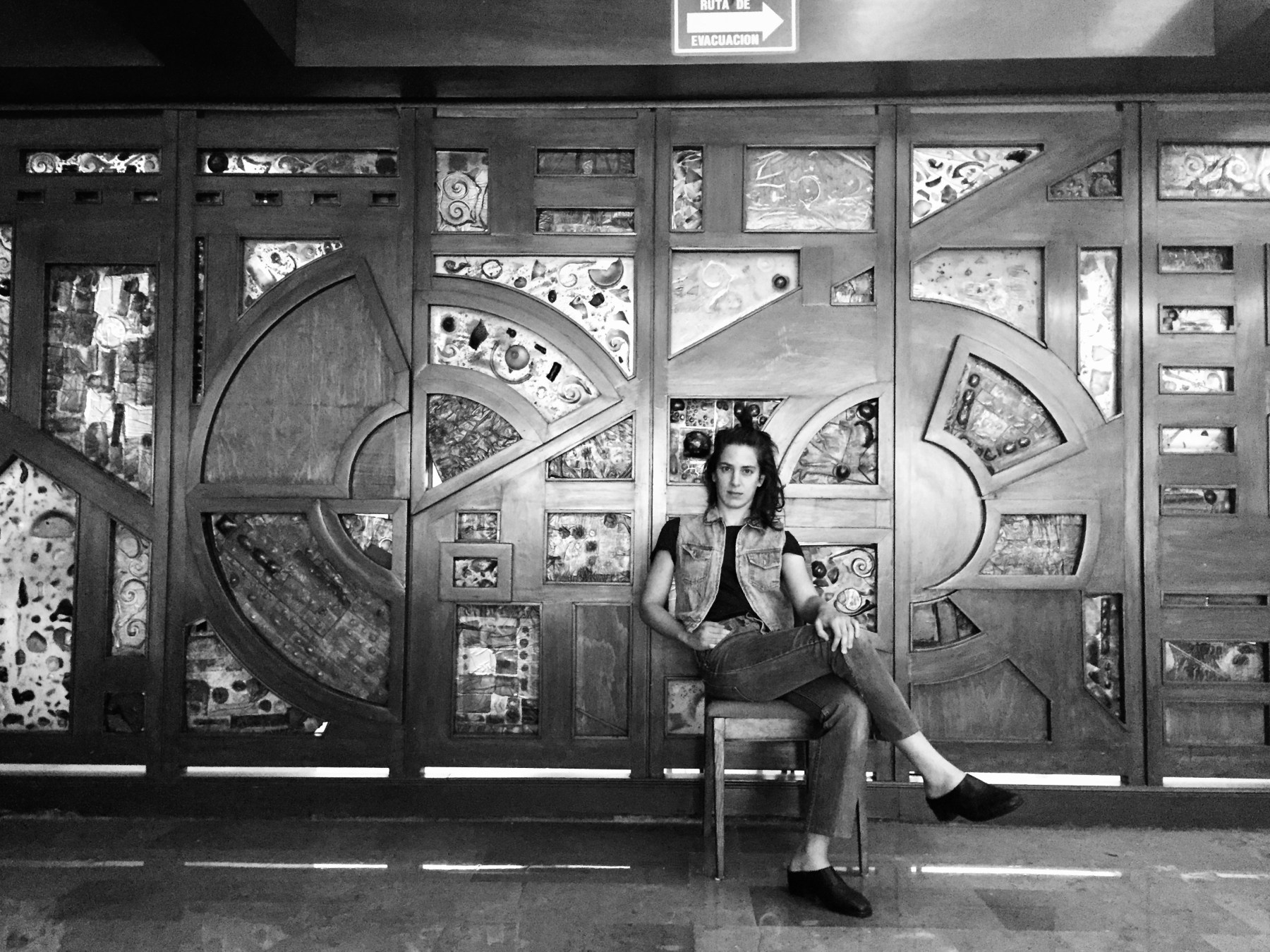
Anna Rosen in Mexico City 2017, photo by Connor Owens.
Anna Rosen (b. 1984, Arlington, Virginia) received her M.F.A. in 2010 from Columbia University. In addition to Night Gallery, Rosen has had solo exhibitions at Kerry Schuss, New York. Her work has been included in recent exhibitions at Page (NYC), Lyles & King, Murray Guy, Cleopatra’s, American Medium, Malraux's Place, and Derek Eller Gallery in New York; The Gallery @ Michael's, Los Angeles; and at Silberkuppe, Berlin. She lives and works in Los Angeles.








































































